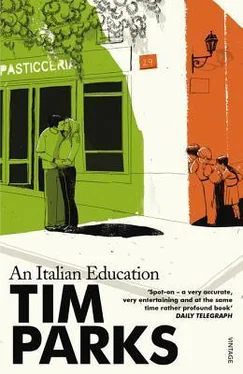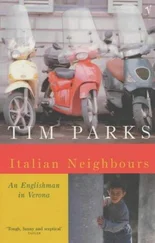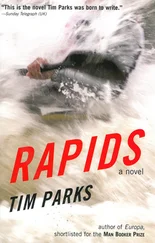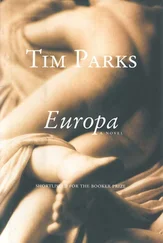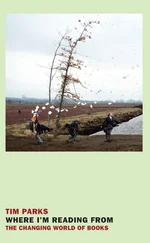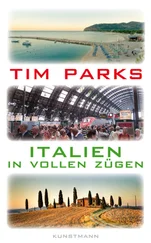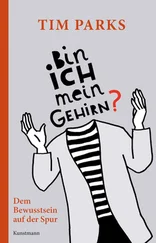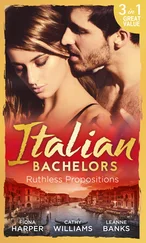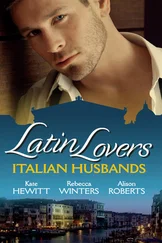Stefi, on the other hand, gathers flowers, though she leaves the wild cyclamens because Mamma has told her they’re rare. She never asks how many flowers there are in the wood.
On the other side of the reserve, if we have the courage to climb the wall and cross it (you shin a tree right beside, get on top, then drop down a good three metres into grass and move quietly quietly through the bushes) — on the other side, where three paths cross, there is a little shrine or capitello with the Madonna and her child, the latter braving the winter weather in just his swaddling clothes. PREGA PER NOI, the stonemason has chipped, and then ANNO MARIANO 1979. So they’re still at it, you realise. It’s not just another lost tradition.
Further on, if you take the path up the ridge northwards, there’s a shrine to Sant’ Antonio, a local saint — as one has local papers and local TV stations — and further on still… The Italian countryside is never just landscape or nature trails, never just a stroll, but full of roadside gods, reminders, little idols, so that you can hardly take your children out of the house here without discussing religion, life, death, and, above all, miracles.
‘How many miracles did San Rocco do?’ Michele wants to know. Why Sant’Antonio, Papà? Why San Giuseppe? In this niche in the rock? Why San Bernardino? Why San Francesco? Time to ask him how long a piece of string is.
On the precipitous path on that other walk that leads down from the tall hill above Pigozzo to Santa Maria in Stelle, a full-size Jesus stands with his back to crumbling rock, arm raised in stony blessing above a pond not more than a couple of metres across, where contadini soak the prunings they have cut so that they can use them later as ties for vines. Inevitably — because this is a spring walk — the frogs croak, crickets whirr, swallows flit across the chalk-white path. ‘How ugly he is!’ Stefi says of the haggard Christ.
When the summer weather gets unbearable the thing to do is to drive the forty minutes up to the fresh air of the first mountains above Velo. Here Jesus and Mary huddle under birdhouse roofs of wood or flaky stone to tell you where someone was lost in a blizzard or, in one place high up above the tree-line, struck by lightning. GESÙ PROTEGGICI! the stonemason carved. I love it when they put the exclamation mark.
‘A hundred days of indulgence,’ announces a small shrine above Tecchie, ‘for a prayer to Maria.’ You’d think such strict after-life accountancy went back to the Middle Ages, but no, the date is 1894. In thick woods at fifteen hundred exhausting metres an overgrown stone cross suggests: ‘Take one step back with your right foot in honour of Jesus, who here resides.’
Wherever we walk we find these things. And the children always stop and look. They always want to read about the disaster or the miracle (the one invites the other). Or the hopes of indulgence. They’ll wander across meadows and dangerously leave paths to decipher the engraving and puzzle over misspelt words with no spaces between them: PERSUADIVOZIONE, one cross says, ‘Out of his devotion’.
Why not count the images? It’s not a bad game. Twenty-seven one day in a walk on the mountain above Giazza, from the big chapel to San Francesco at the bottom to the tiny Madonna behind a rusty grating high up on the cliff face (a rosary — not electronic — is wound round one iron bar). Then, if you lose your way and get back late, you can count the great neon crosses harshly white on the high ridges above you.
The children ask me about obscure saints. They compute thousands of years of indulgences. And of course it doesn’t matter whether they are Christian or not, whether they attend the ora di religione or not. Either way, they can see the countryside is full of spirits. It’s obvious. And somehow or other they will fit in with this Italian vision. They will be more polytheistic than I was. Less likely to make a god of just one thing. They’ll know there’s a saint for every condition, every corner, a moment to turn this way, a moment to turn that. No absolute. So when Plutarch wrote his Quaestiones Graecae he discovered that the Greeks most faithfully kept those religious traditions whose origins they couldn’t remember. What group psychology could be more stable, or more functional?
North of Velo, where stone gives way to wood, there are more crucifixes, fewer Madonnas, first inklings of the Teutonic in the tortured contortions of the body. And there are more picnickers, too, almost always in big groups of extended families, or established friends, or whole condominiums. The backs of their cars are open to unpack all the barbecue equipment; their chairs are set up in the stony beds of dry streams. Like us they’ve come north for the day to escape from the heat.
How many degrees cooler is it up here, Papà? And why does it get cooler if you’re nearer the sun? Shouldn’t it get hotter? Wasn’t that why Icarus fell? And why do you get more indulgence praying in front of one image rather than another? These walks are such a mix of science and mysticism. It almost seems done on purpose to illustrate the two paths to knowledge. Just the other side of a big busy farm, we pass two boys and their girlfriends on the grass kissing — not ten yards from a stinking manure heap. It’s extraordinary. And one boy has the radio on with the football commentary because it’s Sunday. While all around, the country is empty except for its shrines, its irritating cattle with their tinkling bells.
‘Yuck!’ Michele says.
‘Yes, that’s quite a smell.’
‘No, I mean the kissing!’
But a goal breaks that off. The boys are up on their feet cheering. The girls smile. This may be a sentimental people, but rarely romantic.
‘Mummy said we had to be back by seven so you could do your homework,’ I tell Michele on one memorable walk.
‘But I haven’t got any,’ he insists.
‘Why not? They always give you something.’
This is true. It’s incredible how early schools start giving hours of homework in Italy, how seriously and traditionally they teach grammar and maths. It warms a parent’s heart.
‘There’s no homework,’ Michele says, ‘because the others have got to practise for their first communion this evening. They’ve got to say their first confession.’
So, I think, the teacher hasn’t given homework because the priest has told her that the children will be busy. Fair enough. I ask: ‘What would you confess, Michele, if you had to?’
‘Can we stay out then?’ he asks.
‘Please!’ Stefi begs.
They want to go to a place where we found a sheep’s skull some time ago. They want to see if it’s still buried under the leaves where we left it.
‘Yes, but tell me, what would you confess?’
Michele ponders. He’s so earnest. ‘Oh, being naughty. Hitting Stefi. Lying. Taking Gigi’s toys. Swearing. Being mean to Mamma when she’s tired.’
It’s an impressive list.
‘And how does confession help?’
‘You say Ave Maria and Paternoster, you feel sorry and God forgets about it.’
‘And you never do it again.’
‘You try not to,’ Michele ponders, ‘but in the end you’re bound to.’
‘So then you confess it again?’
‘Every time you take communion.’
Which might be every day. Like our dear ex-Prime Minister Andreotti, now accused of mafia crimes. Clearly, my son has very little need of catechism. The news is in the air. We set off to dig up our memento mori .
And it would have been about this time, I suppose, though on quite a different walk, that Don Guido, the local priest, stopped in his car one afternoon to talk to us. We were standing — myself, Michele and Stefi — by one of the village’s endless streams trying to fish out a small Ferrari of Michele’s that Stefi had accidently dropped in the water (provoking Michele to commit one of those inevitable sins). The Ferrari lay bright and red on the stones beneath lazily clear water, but our arms weren’t long enough. Either we waded in, or we went home and got a net.
Читать дальше
